Are Solar Motion Lights Worth It? Pros and Cons
As homeowners and businesses increasingly seek sustainable and cost-effective lighting solutions, solar lights outdoor motion sensor products have surged in popularity. These innovative lights harness solar energy to provide illumination without the need for electrical wiring, offering an eco-friendly alternative to traditional lighting. However, are they truly worth the investment? This article provides a balanced evaluation of solar lights outdoor motion sensor systems, comparing them to traditional wired lights, analyzing their performance in various conditions, recommending durable and high-brightness models (including Bitpott’s Solar Path Light), and offering practical installation and maintenance tips to maximize longevity.

Comparing Solar Motion Lights to Traditional Wired Lights
When deciding between solar lights outdoor motion sensor and traditional wired lights, it’s essential to weigh their advantages and limitations based on cost, installation, performance, and environmental impact.
Advantages of Solar Motion Lights
- Energy Efficiency and Cost Savings: Solar lights outdoor motion sensor systems rely on renewable solar energy, eliminating electricity costs. According to the U.S. Department of Energy, solar lights can function effectively in most U.S. regions, even with limited sunlight, making them a cost-effective choice over time.
- Easy Installation: Unlike wired lights, which often require professional installation and complex wiring, solar lights are DIY-friendly. They typically involve staking into the ground or mounting on walls, with no need for electrical connections.
- Environmental Benefits: By using clean, renewable energy, solar lights outdoor motion sensor reduce your carbon footprint, aligning with sustainable living goals.
- Flexibility: Solar lights can be placed in remote or off-grid areas where wiring is impractical, such as garden paths or distant yard corners.
Disadvantages of Solar Motion Lights
- Dependence on Sunlight: Solar lights outdoor motion sensor require adequate sunlight to charge effectively. In shaded or cloudy areas, their performance may diminish, leading to shorter illumination times.
- Lower Brightness: Compared to wired lights, solar lights generally produce fewer lumens. For example, while a 100-watt incandescent wired bulb can emit 1,500 lumens, most solar lights range from 10 to 600 lumens, which may not suffice for high-intensity security needs.
- Initial Cost: Solar lights often have a higher upfront cost due to integrated solar panels and batteries, though long-term savings offset this.
Advantages of Traditional Wired Lights
- Consistent Performance: Wired lights provide steady illumination regardless of weather or sunlight availability, making them ideal for critical security areas.
- Higher Brightness: Wired systems can support high-lumen outputs, suitable for illuminating large areas like driveways or backyards.
- Customization: Wired lights offer greater control over brightness, color, and timers, allowing for tailored lighting setups.
Disadvantages of Traditional Wired Lights
- Installation Complexity: Wired lights require professional installation, increasing costs and complexity, especially for expansive setups.
- Ongoing Costs: These lights contribute to electricity bills, lacking the cost-saving benefits of solar energy.
- Environmental Impact: Wired lights consume grid electricity, which may rely on non-renewable sources, increasing your carbon footprint.
In summary, solar lights outdoor motion sensor excel in ease of installation, cost savings, and eco-friendliness, while wired lights offer superior brightness and reliability. The choice depends on your priorities—sustainability and flexibility versus consistent high-intensity lighting.
Performance in Dark or Low-Light Conditions
One common concern with solar lights outdoor motion sensor is their performance in dark or low-light conditions, such as shaded areas, cloudy days, or winter months with shorter daylight hours. Here’s an analysis of their effectiveness:
- Sunlight Dependency: Solar lights rely on photovoltaic panels to charge batteries. In low-light conditions, charging efficiency decreases, potentially reducing illumination duration. However, modern solar lights, like those from Couleelight, can still harness ambient light on cloudy days, though charging is slower.
- Motion Sensor Efficiency: Motion sensors in solar lights outdoor motion sensor conserve energy by activating only when movement is detected. This feature extends battery life in low-light conditions, as the lights remain off until triggered. For example, the AloftSun Motion Sensor Solar Landscape Spotlights can detect motion up to 33 feet away, ensuring reliable activation even in dim settings.
- Battery Quality: High-quality batteries, such as LiFePO4, can maintain performance in challenging conditions, lasting up to five years with proper care. Models with replaceable batteries are particularly advantageous for long-term use.
- Workarounds for Dark Areas: To mitigate performance issues in shaded areas, consider models with USB charging options or detachable solar panels that can be placed in sunnier spots. Additionally, setting lights to motion-activated mode rather than constant illumination preserves battery life.
While solar lights outdoor motion sensor may not match the consistent output of wired lights in dark conditions, advancements in battery and sensor technology have significantly improved their reliability, making them viable for most outdoor applications.

Recommended Durable and High-Brightness Models
Based on user feedback and testing, the following solar lights outdoor motion sensor models stand out for their durability, brightness, and performance. These recommendations incorporate insights from recent reviews and include the Bitpott Solar Path Light as requested.
- AloftSun Motion Sensor Solar Landscape Spotlights
- Brightness: Up to 600 lumens, ideal for pathways and security.
- Durability: IP68 weather-resistance rating, withstanding rain, frost, and impacts. Testers dropped a golf ball from 6 feet without damage.
- Features: Three modes (dim, high with motion, constant medium) and a 40,000-hour lifespan.
- User Feedback: Praised for easy installation and reliable motion detection up to 33 feet.
- Best For: Homeowners seeking versatile, high-brightness lighting.
- Ring Solar Pathlight
- Brightness: 80 lumens, suitable for pathways.
- Durability: Sturdy plastic construction, surviving harsh weather conditions. Testers noted functionality after weeks in a dark basement.
- Features: Motion-activated, smart connectivity with Alexa, and notifications via the Ring app.
- User Feedback: Highly rated for integration with Ring ecosystems and long battery life.
- Best For: Smart home enthusiasts with existing Ring devices.
- Bitpott Solar Path Light
- Brightness: Approximately 100–200 lumens, perfect for accentuating garden paths or walkways.
- Durability: Constructed with weather-resistant materials (IP65 rating), designed to endure rain, snow, and UV exposure.
- Features: Motion sensor with a 26-foot detection range, automatic dusk-to-dawn operation, and adjustable brightness settings.
- User Feedback: Users appreciate its sleek design and consistent performance in various weather conditions. Recent reviews highlight its ease of installation and long-lasting LED bulbs.
- Best For: Those prioritizing aesthetic appeal and reliable pathway lighting.
- AmeriTop Motion-Sensor Lights
- Brightness: Up to 800 lumens, excellent for security purposes.
- Durability: IP65 rating, surviving storms and extreme temperatures.
- Features: Three adjustable heads for wide-angle illumination and a 26-foot motion detection range.
- User Feedback: Noted for bright, reliable illumination and quick installation.
- Best For: Security-focused applications like driveways or entryways.
These models balance brightness, durability, and user-friendly features, addressing common concerns about solar lights outdoor motion sensor reliability and performance.
Installation and Maintenance Tips for Longevity
To ensure solar lights outdoor motion sensor perform optimally and last for years, proper installation and maintenance are crucial. Here are practical tips based on expert insights and user experiences:
Installation Tips
- Maximize Sunlight Exposure: Place solar panels in areas receiving at least 6–8 hours of direct sunlight daily. Avoid shaded spots under trees or overhangs to ensure efficient charging.
- Optimal Sensor Placement: Position motion sensors to cover high-traffic areas, such as entryways or pathways. For example, Aootek lights recommend installation at least 5.5 feet high for a 120-degree detection arc.
- Secure Mounting: Use sturdy stakes or wall mounts to prevent tipping in windy conditions. For Bitpott Solar Path Lights, ensure the stake is firmly lodged in stable soil.
- Angle Adjustment: Adjust solar panels to face south (in the Northern Hemisphere) for maximum sunlight capture. For lights with detachable panels, place the panel in a sunny area while positioning the light where needed.
Maintenance Tips
- Regular Cleaning: Clean solar panels monthly to remove dust, dirt, or snow that may block sunlight. Use a soft cloth and mild detergent to avoid scratching.
- Battery Care: Check battery performance annually. Replace rechargeable batteries every 1–2 years if brightness diminishes. Opt for high-quality Li-Ion or LiFePO4 batteries for longevity.
- Winter Precautions: In winter, store lights indoors or use motion-activated settings to conserve battery life. Clear snow from panels to maintain charging efficiency.
- Inspect for Damage: Regularly check for cracks or water ingress, especially after storms. Models like AloftSun with IP68 ratings are more resistant, but routine checks ensure longevity.
By following these tips, users can extend the lifespan of solar lights outdoor motion sensor to 5–25 years, depending on the quality of the solar panel and battery.
Addressing Common User Concerns
- Performance in Winter or Cloudy Conditions: As noted, modern solar lights outdoor motion sensor can function on ambient light, and motion sensors help conserve energy. USB charging options offer a backup for prolonged low-light periods.
- Durability: High-quality models with IP65 or IP68 ratings, like AloftSun and Bitpott, withstand harsh weather, addressing concerns about longevity.
- Brightness: While not as bright as wired lights, models like AmeriTop (800 lumens) provide ample illumination for security, and Bitpott’s 100–200 lumens suit pathway lighting.
- Cost vs. Value: The higher initial cost is offset by zero electricity bills and minimal maintenance, making solar lights outdoor motion sensor a cost-effective long-term investment.
Conclusion
Solar lights outdoor motion sensor offer a compelling blend of sustainability, ease of installation, and cost savings, making them a worthy consideration for many homeowners. While they may not match the brightness or consistency of wired lights, advancements in battery technology, motion sensors, and weather-resistant designs have made them reliable for various applications. Models like the AloftSun Motion Sensor Solar Landscape Spotlights, Ring Solar Pathlight, Bitpott Solar Path Light, and AmeriTop Motion-Sensor Lights stand out for their durability and performance. By following proper installation and maintenance practices, users can maximize the lifespan and efficiency of these lights, addressing common concerns and enjoying eco-friendly illumination for years to come.

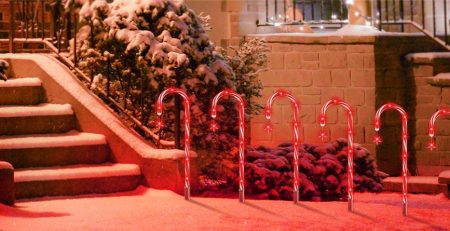
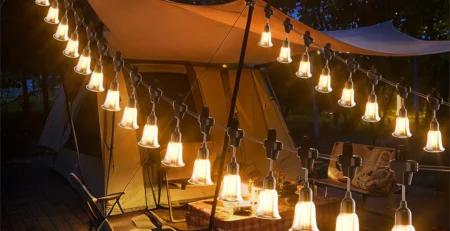
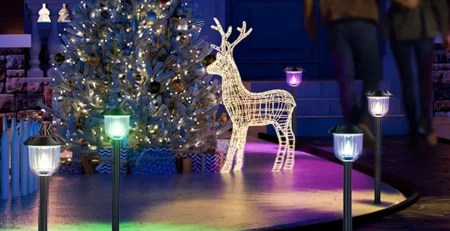
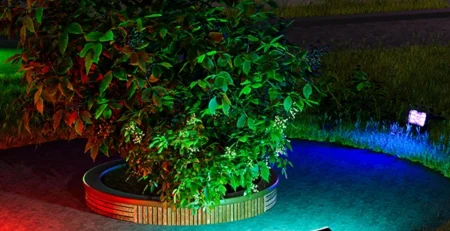


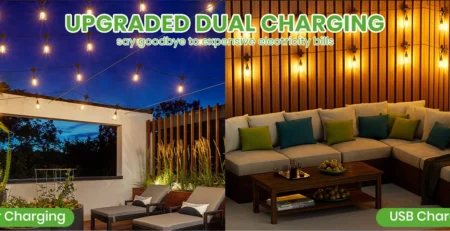
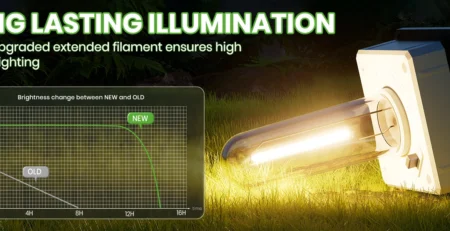

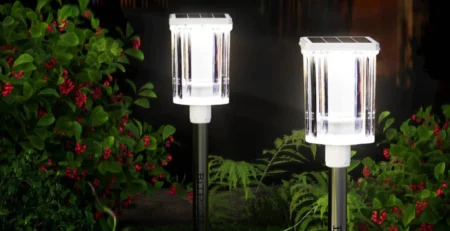
Leave a Reply